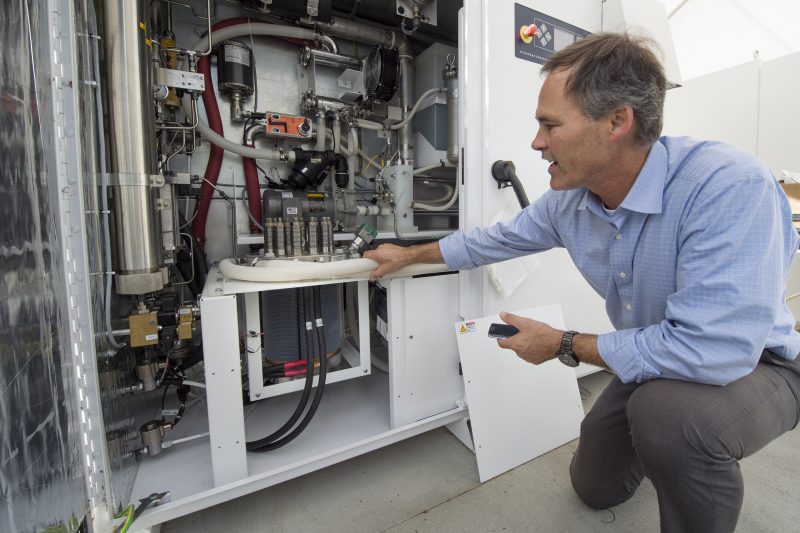University of Calif. implements first power-to-gas hydrogen pipeline project in U.S.

Engineers at the University of California, Irvine are utilizing a new technique to tap into excess clean electricity that would otherwise be wasted by implementing the first power-to-gas hydrogen pipeline injection project in the nation.
“UCI’s power-to-gas project is showing that there are technologies in development today that offer ways to drastically increase the use of environmentally sensitive wind and solar resources in both power generation and delivery,” said Scott Samuelsen, Advanced Power & Energy Program (APEP) director and professor of mechanical & aerospace engineering.
P2G is a technique used to convert surplus sustainable energy from wind farms or solar panels into hydrogen. The hydrogen can then be blended with natural gas and used to power home appliances, power plants and several other items. These fuels can be stored in containment vessels and used in hydrogen fuel cell vehicles or for use at a different time. Similar systems are currently used in Canada and Germany.
“One of the big challenges we’ve faced in adding wind and solar to the grid is what to do with the excess electricity,” said Jack Brouwer, associate director of the APEP program. “We’ve shown you need not halt renewable power generation when demand is low. Instead, the excess electricity can be used to make hydrogen that can be easily integrated into existing natural gas pipeline infrastructure.”
The pilot project began last summer and has been closely monitored by researchers trying to determine whether the use of P2G is possible on statewide or across regional power grids.
The new equipment was installed by APEP engineers and facilities management technicians after receiving project funding from Southern California Gas Co. and Proton OnSite.
